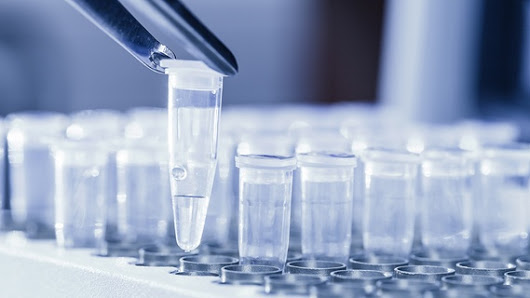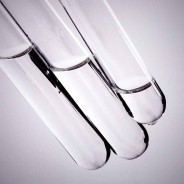
The water sampling process follows a journey akin to a David Attenborough wildlife series, in terms of sheer scale, potential impact and knock-on effect. In this blog we will document the life of a water sample, from the point at which a water treatment specialist initially takes the sample, and thereafter pursue its natural progression all the way through to the compilation of the all-important results certificate. Minus any softly-spoken narrative, and/or extreme close up camera shots of the subject matter.
What is Water Sampling?
First of all we need to determine just what water sampling is however, and to describe the practice in but a sentence; it essentially describes the task of collecting (and subsequently analysing under laboratory conditions) specific measurements located in relevant areas, found within the confines of an internal water storage system. Yet while that might explain the gist of water sampling, rest assured it involves going much deeper to establish whether or not there’s any bacterial contaminants lurking in the darkest recesses of water tanks and associated pipework. Typical, in terms of infrastructure, of which you find in both domestic and commercial properties across the UK.
The undertaking of both one-off and habitual water sampling at source is crucial to ascertain the quality of the water which emerges from various outlets; be it for cleansing or for drinking purposes. As well as testing water samples for the presence of a number of potentially harmful microbes which are known to reside and indeed, thrive in the right ambient conditions, the risk of Legionella can also be identified as a direct result of tried and tested sampling methodology.
With this forming the critical basis of the whys and wherefores of water sampling, it’s imperative that certain sectors as a whole, together with individual businesses which house water storage facilities on-site are aware and moreover, comply with directives and legislation which outline the practices, procedures and protocols of far-reaching water management strategy across the board.
Is There More Than One Type of Water Sampling Test?
As we’ve mentioned above, drinking water samples are crucial to make sure that a cold water supply isn’t being contaminated by the presence of pathogenic bacteria, and therein addresses the subject of potential volume of bacteria existing in the water, referred to as TVC. Or Total Viable Count. This particular level of testing is performed at two differing temperatures (22°C and 37°C precisely) to best illustrate the underlying fact that the bacteria can prosper at body temperature. With regards to Legionella testing, and this is carried out under the guise of a general ‘catch-all’ TVC test at 30°C, and reflects the overall health of the water system. A low TVC level suggests a nominal level of bacteria, while conversely a reading of 10,000cfu (or Colony Forming Units) per ml of water, would set alarm bells in relation to a system being compromised by biofilm contamination.
Just to confuse the issue, some water treatment specialists will use the acronym, TACC, instead of TVC. Which broadly-speaking amounts to the same methodology and application. TACC (or Testing Total Aerobic Colony) again details the microorganisms which might have been discovered in a water sample. Only it’s not solely bacteria which come under the microscope during TACC testing; as similar microorganisms such as yeasts or moulds are scrutinised too. Carried out in the form and function of an in-situ dip test, the TACC test can identify whether or not there’s any potentially poor water hygiene issues that require further attention. Primarily these can include coliforms and E.coli (and other faecal matter bacteria) to see if they’ve put in an unwelcome appearance; and if so would mean that the water is categorically unfit for human consumption.
Is the Process of Water Sampling a Complex One?
While it’s not akin to splitting the atom, for example, it is however a somewhat elaborate procedure which necessitates a degree of thought and planning from the outset, so as to be performed to the optimum. And it’s not unheard of for some of those people responsible for facility management (or building owners) to either overlook the importance of rigorous and routine water testing, or alternatively underplay the robust efforts required to ensure water safety and peace of mind going forward.
It all begins at the point of contact with the initial water sample and safeguarding it from any possible contaminants which would quickly render it inaccurate from the get-go. That being said, the physical aspect of harnessing the liquid measurement marks only the first step in a lengthy and robust process, which then includes analysis, logging and any suggested remedial work which could be forthcoming. Below we take a look at a summarised breakdown of the water sampling process, to afford you a better understanding of what the journey entails.
- Sample Collection
The first stage is, unsurprisingly, the acquiring of the water sample. For this, a sterile water sample vessel is frequented, with the water treatment engineer charged with the task taking special care not to compromise the purity of the sample by way of avoiding physical contact with the tap or any other possible contaminants in the immediate vicinity. To reduce the risk, vessel lids should only be removed at the last moment, and immediately resealed once the vessel is filled. Sample vessels should never be over-filled, as there’s a chance that the neutralizer could be rinsed out. Gloves should always be worn during this critical extraction phase, while respiratory protection might also be used if deemed necessary. By comprehensively ruling out cross-contamination at this juncture, the engineer can be confident that any reading observed at the next stages in analysis accurately reflects the current state of the water within the system, then and there. Samples will then be appropriately labelled prior to transportation
- Getting Samples from A - B
Another means by which water samples could flag up false readings back at the lab, is courtesy of transportation failings. Should they not be stored or transported efficiently – ideally in a cool box or refrigerated unit; and in adherence with sector governance – or for that matter, not received for analysis within a predetermined time frame, then there’s a very real risk that true readings could be disputed. Windows of opportunity for optimum analysis to be carried out are recognised as being tight, with a 24 hour turn-around considered to be the most conducive to accurate prognosis
- Thorough - and Industry-standard - Water Sample Analysing
Technical knowledge and previous experience is key to distinguishing the presence of micro-organisms, which is why it’s hugely important to recruit water treatment specialists when it comes to water sampling. Once the samples are back at the laboratory (accredited by UKAS, the national body for the accreditation of testing and calibration laboratories), they are allocated a unique sample number so as to safeguard process tracking and eliminate the possibility that samples could get mixed up. They are then divided into batches and subjected to group testing. In the simplest form, microbiology testing involves the mixing of water with a growth jelly on petri plates, which are then incubated at the bacteria’s optimum temperature and left to grow. Colonies are later tallied up after a set time has elapsed. Of course, that’s the basic science, but often additional stages are pre-requisitional.
- Result Recording
On average it can take 4-5 days for results of water sample testing to be confirmed by the lab, after which certificates will be issued; and these will indicate as to where water standards have met with legal compliance. With legionella however, bacteria can take up to 10 days to grow, with the petri plates reviewed at days 4 and 7, prior to the reading of the final result on the 10th day. Due to the infection risks associated with legionella bacteria, clients are notified of positive results ASAP, as opposed to having to wait the for full 10 days incubation to pass. Certification is uploaded to specific client records portals offered by water treatment specialists, such as our own. And which provides ready access to all parties concerned thereafter.
- Action Required
Now is the time to examine the findings of the water sampling tests and thrash out a way of eradicating any issues which have been flagged up; and in line with current legislation. Unless that is the results have been returned without any call to action, based on the findings being of a negative nature. With reference to the former outcome, remedial actions will be stipulated, which could manifest as a chlorination to disinfect a water supply, with the aim of dissolving any identified bacterial contaminates going forward.








